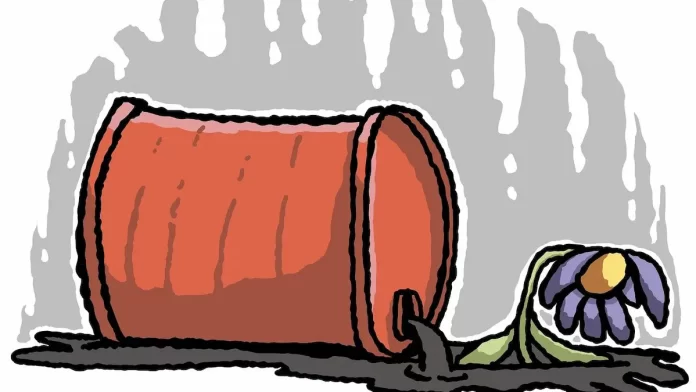Oil spills are among the most significant environmental disasters that can occur in marine ecosystems.
Accidental spills during oil exploration, transportation, and storage can have devastating effects on aquatic life, coastal habitats, and human communities.
Therefore, effective oil spill treatment mechanisms are crucial to minimize the environmental impact and protect our oceans and wildlife.
This article explores various methods used to treat and mitigate the consequences of oil spills.
Containment and Recovery
Containment and recovery are the initial steps in responding to an oil spill. Booms and barriers are deployed to encircle and contain the spread of the oil, preventing it from reaching sensitive areas.
Skimmers and sorbents are then used to recover the spilled oil from the water’s surface.
Skimmers are specialized vessels that skim the oil off the water, while sorbents are materials designed to absorb oil, such as straw, hay, or synthetic absorbents.
Mechanical Methods
Mechanical methods involve physically removing the oil from the affected environment.
In situ burning is a technique where controlled burns are conducted on the water surface to combust the oil.
This method reduces the amount of oil present but can release harmful pollutants and pose some environmental risks.
Mechanical devices, such as pumps and vacuums, can also be employed to remove oil from water surfaces, sediments, and shorelines.
Chemical Dispersants
Chemical dispersants are used to break down oil into smaller droplets, facilitating its dispersion into the water column.
This method aims to enhance the natural biodegradation process, making it easier for microorganisms to digest the oil.
However, the use of dispersants remains controversial due to potential ecological impacts and long-term consequences on marine ecosystems.
Bioremediation
Bioremediation is a natural approach that uses microorganisms to degrade the spilled oil.
Certain bacteria and fungi have the ability to consume hydrocarbons, breaking them down into less harmful substances.
This method can be applied on both water and shorelines, but its effectiveness depends on environmental conditions, such as temperature, salinity, and the availability of nutrients.
Several types of organisms are commonly used in bioremediation techniques. Some of the key organisms involved include:
- Bacteria: Certain species of bacteria are highly efficient in breaking down hydrocarbons found in crude oil. They produce enzymes that can degrade oil into less harmful substances, such as carbon dioxide and water. Examples of hydrocarbon-degrading bacteria include Pseudomonas, Bacillus, and Alcanivorax species.
- Fungi: Certain fungi also play a crucial role in bioremediation by breaking down hydrocarbons in oil spills. Fungi like Aspergillus, Candida, and Penicillium have been found to possess the ability to metabolize and degrade hydrocarbons.
- Algae: Some species of marine algae can assist in the bioremediation process by absorbing and degrading hydrocarbons. Algae can contribute to the remediation of oil-contaminated water through their natural mechanisms of oil uptake and metabolism.
- Archaea: Certain Archaea species have been identified as hydrocarbon-degrading organisms. They can survive and function in extreme environments, including oil-contaminated areas.
It is worth noting that the effectiveness of bioremediation depends on various factors, including the type of oil spilled, environmental conditions, and the presence of appropriate microbial populations.
Therefore, specific organisms might be more effective for different types of oil spills and environments.
Additionally, bioremediation is often used in combination with other oil spill treatment techniques to maximise its effectiveness and reduce the environmental impact of oil spills.
Shoreline Cleanup
Oil spills can contaminate shorelines, leading to severe impacts on coastal ecosystems.
Shoreline cleanup involves manual removal of oil from beaches, rocks, and other affected coastal areas.
Specialized cleaning agents, such as biodegradable solvents, can be used to dissolve the oil, and manual labor or mechanical equipment can be employed to physically remove the oil from the shoreline.
Natural Attenuation
Natural attenuation relies on natural processes to break down and disperse the spilled oil.
Factors such as wave action, sunlight, and temperature changes can aid in the degradation of oil over time.
This approach is less intrusive and can be effective for small-scale spills in less sensitive areas, but it requires close monitoring to ensure proper recovery of the ecosystem.
Conclusion
Oil spills represent a significant threat to marine ecosystems and human livelihoods. Effective treatment mechanisms are essential to minimize the damage caused by such disasters.
A combination of containment, mechanical methods, chemical dispersants (with caution), bioremediation, shoreline cleanup, and natural attenuation can be applied depending on the size and location of the spill.
It is crucial to develop and implement advanced and environmentally friendly technologies to safeguard our oceans and protect the delicate balance of marine life from the devastating impacts of oil spills.
Additionally, strict regulations and preventative measures must be enforced to prevent future spills and ensure responsible handling of oil and its products
